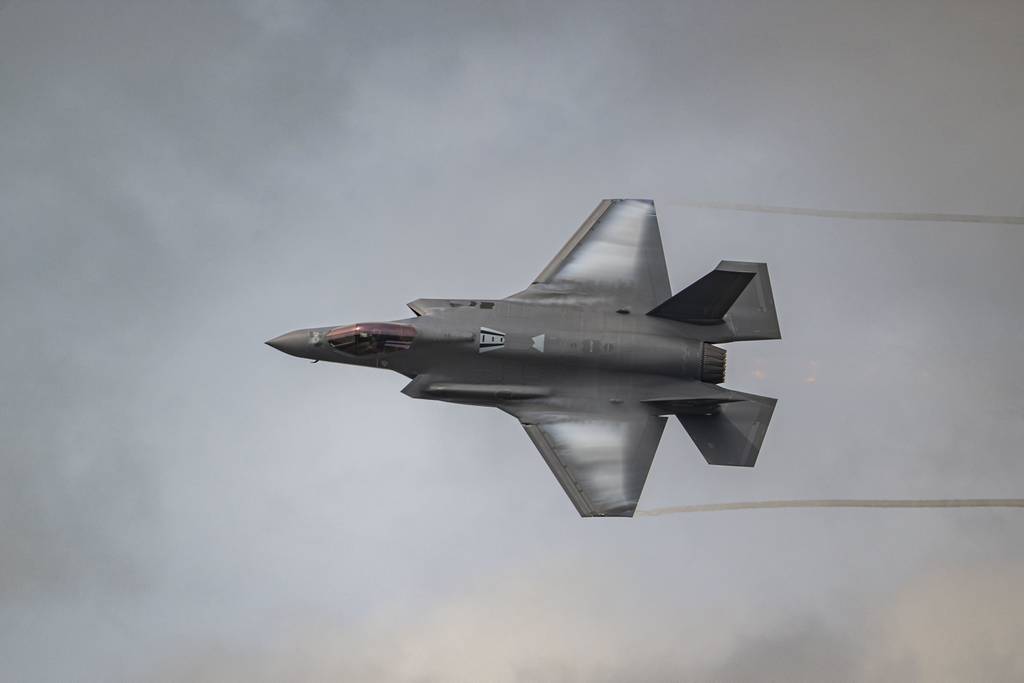
The first F-35s to be delivered with a set of upgrades known as Technology Refresh 3 will initially be used for training flights, but will not be ready for combat until 2025, Lockheed Martin said in an earnings call Tuesday.
Lockheed chief executive Jim Taiclet told investors the company is focused on fully implementing TR-3 — a set of upgrades to the F-35′s software and hardware, including better displays, computer memory and contracting power — and has made progress in recent months.
But TR-3 is already a year overdue, and is not likely to be ready until at least the third quarter of 2024. Lockheed Martin is still building F-35s intended to have TR-3, but since last summer the government has refused to accept delivery of those jets without the upgrades.
TR-3 was originally scheduled for in April 2023, but software problems and difficulties integrating it with the F-35′s new hardware have set the effort back considerably. Hardware delays have also challenged the program. Lt. Gen. Michael Schmidt, the F-35 program executive officer, told lawmakers in December 2023 production on some key components needed for TR-3 has been slower than expected.
Pressure is mounting on Lockheed and the F-35 program to get them ready, with multiple lawmakers expressing dissatisfaction with the delays. The TR-3 problem was also a factor in the Air Force’s decision to trim its planned purchase of F-35s in 2025, from the originally expected 48 to 42.
“We have been in this meeting, coming back year after year talking about this, and each year we’re kicking the can down the road,” Rep. Donald Norcross, D-New Jersey, told Schmidt in a House Armed Services subcommittee on tactical air and land forces hearing last week. “It’s always something new. You need to understand the frustration.”
Schmidt told lawmakers at that April 16 hearing “a significant number” of those jets are built, except for the insertion of TR-3, and are parked at Lockheed Martin facilities awaiting delivery.
The F-35 Joint Program Office confirmed to Defense News in November it was considering a strategy of loading interim versions of the TR-3 software into the jet as a way to speed delivery before the upgrades are completely done.
Schmidt told lawmakers the “truncated” software would lack some combat capabilities at first. The “first realistic chance” at getting an F-35 delivered with a partial version of TR-3 will be this July, he said, though some experts think August or September may be more realistic.
Taiclet said Tuesday flight testing of the truncated software configuration is now underway, and the company expects to be able to mature 95% of TR-3′s capabilities. Lockheed Martin still expects to deliver jets with some TR-3 capabilities in the third quarter, and they would be upgraded into fully combat-capable jets in 2025.
Taiclet said Lockheed is on track to deliver between 75 and 110 F-35s this year. That is unchanged from Lockheed’s last earnings call in January, but would still be fewer than the approximately 150 jets the company usually delivers each year.
Taiclet alluded to those supply delays hampering TR-3 on Tuesday and said delivery of 75 to 110 jets this year “requires timely receipt of the necessary hardware from TR-3 suppliers along the way.”
And the significant advancements in the F-35′s capabilities — the jet is intended to receive a subsequent upgrade called Block 4 that will add even more abilities — have proved to be challenging, Taiclet said.
“What we’ve run into on TR-3 is, the level of complexity and executing a [capability] increase that’s pretty dramatic,” Taiclet said. “We are wringing out all of the software through all of the new hardware, and integrating into all of the aircraft’s other systems, and that’s taken longer than our team predicted.”
Lockheed Martin is confident releasing a training version of TR-3 first, with a combat-capable version several months later, is sound, Taiclet said. That way, squadrons can get their hands on the jets and start training operations as well as setting up spare part pools, maintenance organizations and other infrastructure.
“We’d like to be able to do it sooner, but this is the schedule we’re on,” he said.
Author: Stephen Losey
Source: DefenseNews



